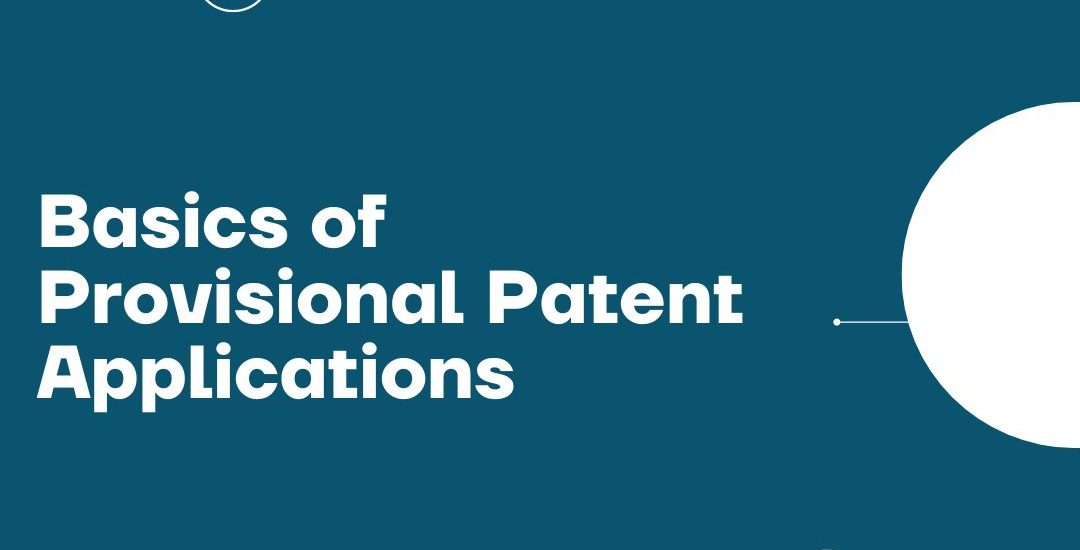A provisional patent application is a document filed with the United States Patent and Trademark Office that evidence of an inventor’s ownership of an invention. A provisional patent application aims to expedite the process of obtaining a full, formal patent. A provisional patent application can be filed for any invention, not just those in clinical or commercial trials, or have already been licensed to a third party. Once the full patent has been issued, any subsequent patents obtained based on the same invention will also be issued as full patents.
The advantages of filing a provisional patent application include the following:
- Faster examination time (typically around six months as opposed to around one year for an original patent),
- Reduced costs, and
- Priority over other pending applications.
Provisional patent applications are a great way to secure a patent for your invention before you have finished the full patent process. But there are some basic things you need to know about provisional patent applications before you file them. This article will provide you with the basics.
You need to know several things before filing a provisional patent application. In this article, we will cover the following:
- What is a provisional patent application?
- When should I file it?
- What should I do if my idea is already patented?
- How long does it take to get approved?
How to write for a provisional patent?
The invention is not patented by applying for a provisional patent, which is not legally binding. The non-provisional patent can, however, only be obtained by filing the necessary paperwork and making the required payments within one year of the filing date. Your idea is safeguarded during this time and is known as patent pending. The application involves:
- a concise written explanation of the invention.
- Illustrations or sketches that support the invention.
- Descriptional text for the illustrations or figures.
- your name and e-mail address.
- Name and contact information for your lawyer.
- A cover page.
Provisional applications serve two main purposes: protecting intellectual property and building market share. By showing that you’re actively exploring patent protection, you can ease some legal pressure when filing for a full patent. And by getting early feedback, you can tweak your invention for maximum success.
If you’ve an inventive idea and are ready to take the next step, provisional protection may be right. You can put together an effective provisional application by following a few simple steps. Keep these basics in mind to get started:
- Know your rights: Familiarize yourself with the relevant patents and trademarks before filing. This will help protect your intellectual property while giving others the misdirection they need to continue working on their ideas without fear of infringing on yours.
- Be realistic about what you can achieve: While provisional protection is helpful, don’t expect it to solve all your problems. Most patents issued due to provisional applications have lower claims coverage and shorter durations than regular patents. Don’t get discouraged – realize that things may move slower during this early stage.
- Craft a strong strategy: Your provisional application should reflect your overall business strategy – not just your product specs or prototype design. Ensure all related documentation is included (e.g., marketing materials, financial projections, etc.), and be prepared to back up your claims with evidence (e.g., test data, customer quotes).
Why is the provisional patent application so important?
Except for the Claims section, the provisional patent application must contain all the same information as a non-provisional application. This outlines the protection provided by the patent. The non-provisional application should be completed in roughly 80% of the time it takes to complete the provisional application if you’re paying a patent attorney to handle the entire procedure.
Once you file a provisional patent application, you have a full year from that date to file a non-provisional patent application. It is an effective stand-in while you complete your official application and gather the money to pay for the patent.
You might think about a cost-effective patent service, as employing a patent attorney is the more expensive choice. But remember that these services frequently seem too wonderful to be true. Sometimes low-cost patent services prey on innovators and make lofty claims they can’t keep.
Self-drafting the provisional patent application may be your only choice if you need to protect your invention but are on a tight budget.
There are some common mistakes you should avoid while filing for a provisional patent, which is as follows:
- You might believe that the document’s specifics don’t matter because the United States Patent and Trademark Office doesn’t require a formal form or precise guidelines. However, any mistakes made when submitting the non-provisional application could result in issues.
- Consistently make the mistake of including too much information in your provisional patent application rather than not enough. If you overlook a part, you risk losing your patent.
- If you are asking for a priority date for your patent, you shouldn’t submit a provisional application unless you can submit a non-provisional patent application within a year. Failure to do so will result in the provisional application expiring and the loss of protection for your idea.
Conclusion
A provisional patent application is a document that helps protect your inventions before you file for a full patent. It’s a way to “test the waters” to see if potential customers are interested in your product or process. A provisional application is typically filed with the US Patent and Trademark Office (USPTO) within six months of the invention. A provisional patent application is a document submitted to the United States Patent and Trademark Office (USPTO) to receive the benefits of a patent without having to file an actual application. A provisional patent application is filed with all the required information, but it is not yet granted. Once the statutory requirements are met, the provisional application will be converted into an original (full) patent application.

